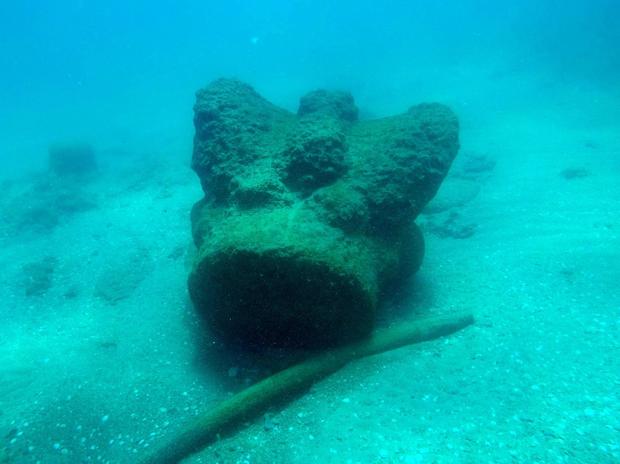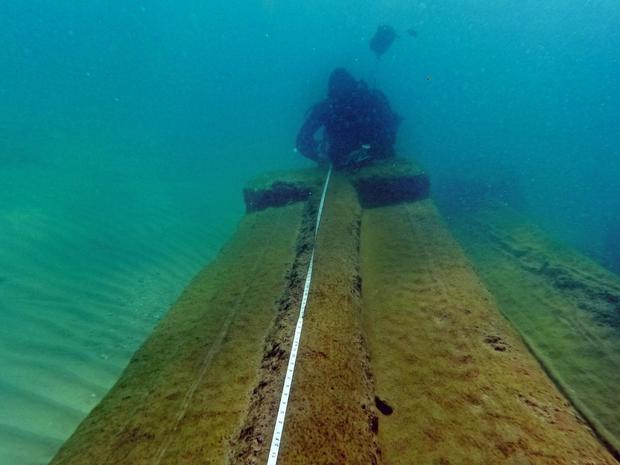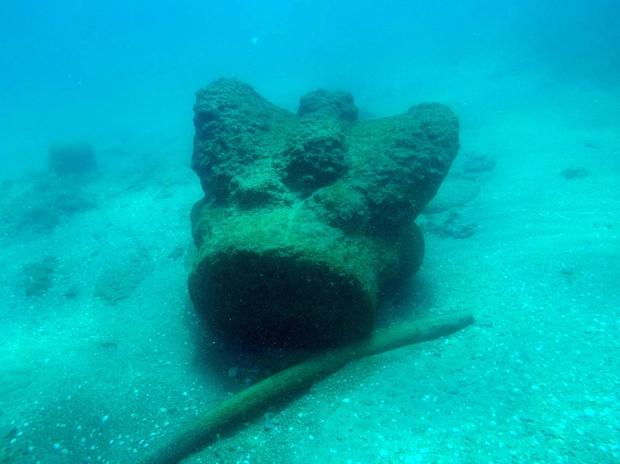A man diving off the coast of Israel discovered an “enormous, rare cargo” of centuries-old marble artifacts underwater, the Israel Antiquities Authority said Monday.
The artifacts are 1,800 years old, the agency said in a Facebook post, making it “the oldest sea cargo of its kind known in the Eastern Mediterranean.” The artifacts are architectural pieces, including multiple decorated Corinthian column heads and a “huge” marble architrave, the decorative molding meant to go around a door. The architrave measured up to six meters, or nearly 20 feet.
The swimmer, Gideon Harris, was swimming at the Beit Yanai beach, a popular spot for swimmers, surfers and divers about 24 miles from Tel Aviv. Harris contacted the Israel Antiquities Authority, it said.

Israel Antiquities Authority
It turned out that the authority had “been aware of the existence of this shipwrecked cargo for some time,” according to Koby Sharvit, director of the underwater archaeology unit at the agency. However, the authority did not know where exactly the cargo was located, so Harris’ sighting was “gratefully received.”
“We didn’t know (the cargo’s) exact whereabouts as it was covered over by sand, and we … therefore could not investigate it,” Sharvit said. “The recent storms must have exposed the cargo, and thanks to Gideon’s important report, we have been able to register its location, and carry out preliminary archaeological investigations, which will lead to a more in-depth research project.”
The authority said it’s likely the items, which evidence shows were carried by a merchant ship that was shipwrecked in a storm, were “destined for a magnificent public building—a temple or perhaps a theatre.”

Israel Antiquities Authority
“From the size of the architectural elements, we can calculate the dimensions of the ship; we are talking about a merchant ship that could bear a cargo of at least 200 tons,” Sharvit said in the Facebook post. “These fine pieces are characteristic of large-scale, majestic public buildings. Even in Roman Caesarea, such architectural elements were made of local stone covered with white plaster to appear like marble. Here we are talking about genuine marble.”
The items likely came from the Aegean or Black Sea regions, in Turkey or Greece, Sharvit said.

Israel Antiquities Authority
In addition to helping researchers find the long-missing cargo, Harris’ report has helped resolve a major debate among experts, Sharvit said. Archaeologists have argued for years about whether architectural elements, like the ones found by Harris, were completely made in their lands of origin or transported in a partially carved form and finished at the destination. Because the items Harris found were partially worked, the latter argument is now believed to be true.
Harris has been awarded a “certificate of appreciation for good citizenship,” the antiquities authority said.
“Gideon’s report epitomizes the value of a citizen’s awareness regarding antiquities, and even more the importance of reporting them to the Israel Antiquities Authority,” said Eli Escusido, the director of the agency. “The cooperation of the community plays an important role in archaeological research. We ask citizens who come across antiquities in the sea to note the exact location and to call us to the site. This provides invaluable information contributing to the history and cultural heritage of the country.”
- In:
- Shipwreck
- Israel
Kerry Breen 
Kerry Breen is a news editor and reporter for CBS News. Her reporting focuses on current events, breaking news and substance use.
